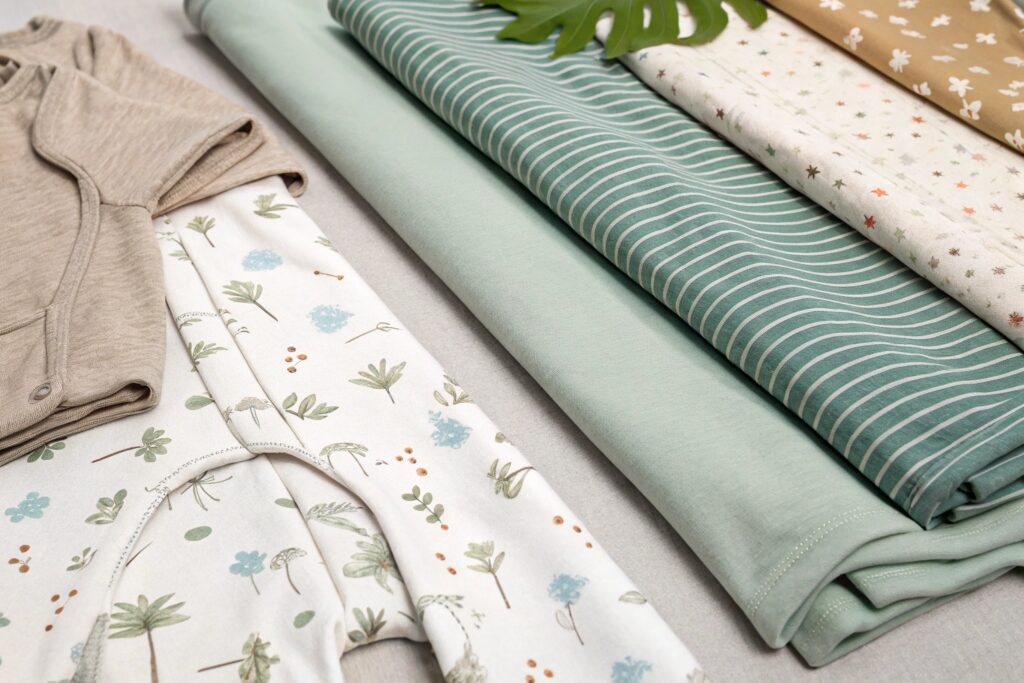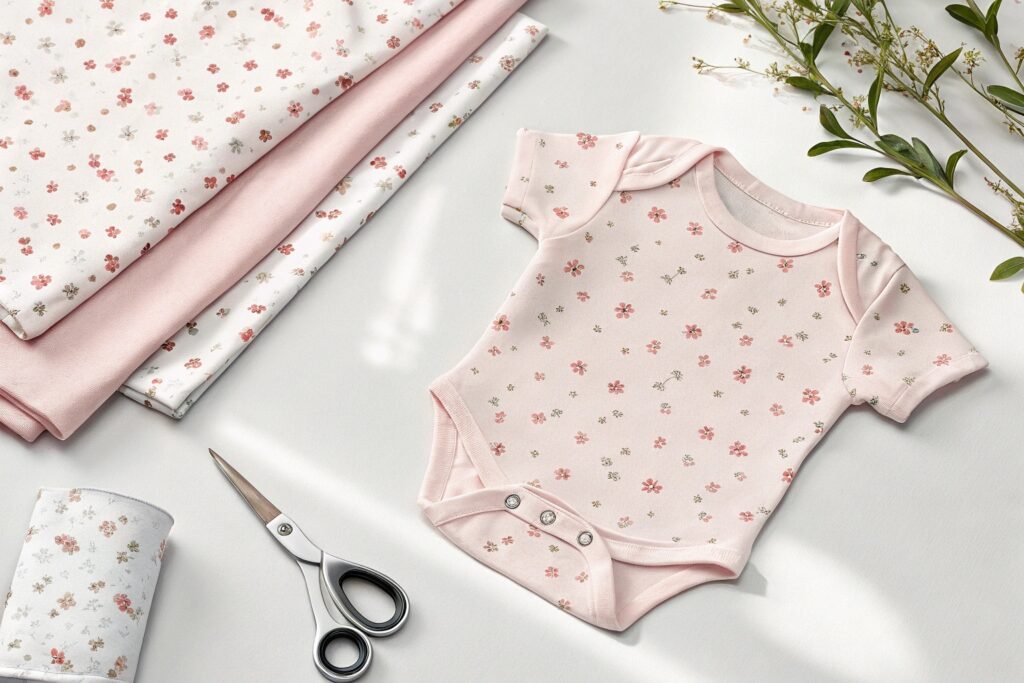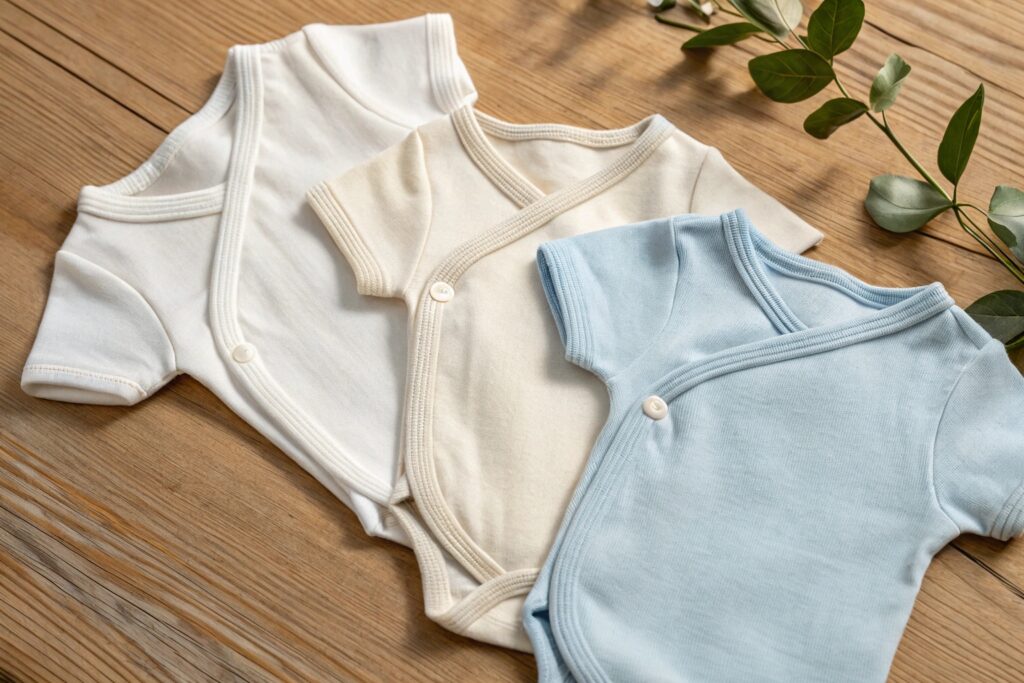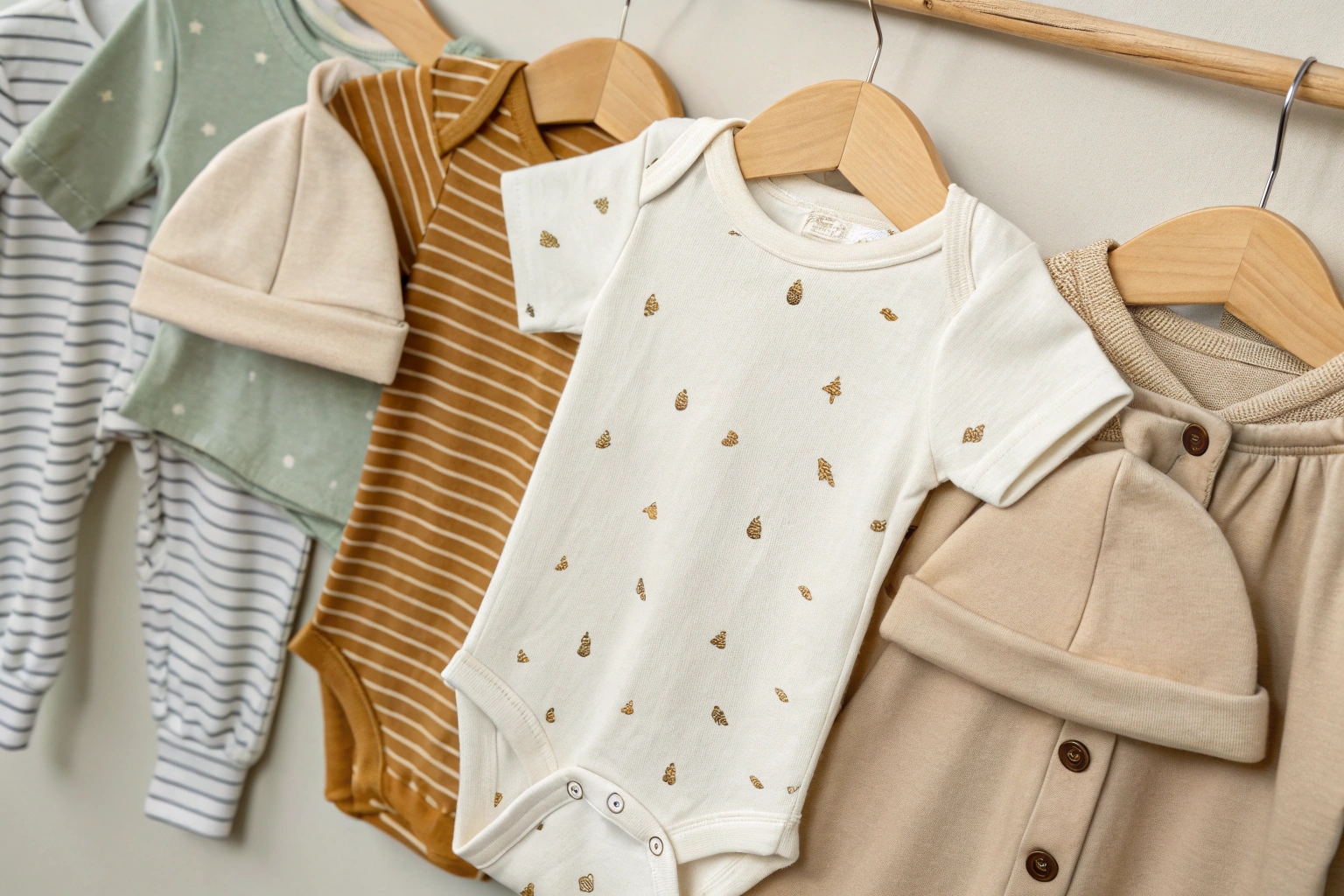Parents today want eco-friendly baby clothes but balk at premium prices. The average organic cotton onesie costs 40% more than conventional options, putting sustainable fashion out of reach for many families.
Baby brands can offer affordable sustainable clothing by optimizing fabric choices, implementing zero-waste production techniques, and leveraging economies of scale - exactly like we do at Fumao Clothing with our 5 production lines specializing in kids' wear.
The good news? Several proven strategies exist to make green baby fashion accessible. Let's examine how forward-thinking brands are removing the cost barrier to sustainability.
What Eco-Friendly Fabrics Lower Newborn Clothing Costs?
When Ron's baby clothing brand switched to sustainable materials last year, his production costs initially spiked 60%. After testing 12 fabric options, he found solutions that actually reduced expenses.
The most cost-effective eco-fabrics for baby clothes are: organic cotton (when bought in bulk), bamboo-Lyocell blends (30% cheaper than pure bamboo), and recycled polyester (made from plastic bottles, costing 20% less than virgin polyester).

How Does Organic Cotton Pricing Compare at Scale?
Many brands assume organic cotton always costs more, but our factory's pricing shows:
| Quantity | Conventional Cotton | Organic Cotton | Price Difference |
|---|---|---|---|
| 100kg | $5.20/kg | $7.80/kg | +50% |
| 500kg | $4.90/kg | $6.50/kg | +33% |
| 1000kg | $4.30/kg | $5.20/kg | +21% |
| 5000kg | $3.80/kg | $4.10/kg | +8% |
At our 5000kg MOQ, the premium shrinks to just 8% - easily offset by marketing benefits.
Why Are Bamboo Blends More Affordable Than Pure Bamboo?
Pure bamboo fabric requires extensive processing, but blending strategies cut costs:
-
Bamboo-Lyocell (70/30): $9.50/m vs $14/m for pure bamboo
- Maintains 90% of bamboo's softness
- Uses less energy-intensive processing
-
Bamboo-Organic Cotton (50/50): $7.80/m
- Ideal for baby bodysuits
- Combines cotton's breathability with bamboo's stretch
How to Reduce Waste in Baby Garment Production?
The baby apparel industry wastes 25% of fabric during cutting - enough to outfit every newborn in Europe annually. Smart brands are turning this cost center into savings.
Three proven waste-reduction methods are: digital pattern nesting (saves 15-20% fabric), made-to-order production (eliminates overstock), and scrap fabric upcycling (creates matching accessories). Our factory achieves 92% material utilization through these techniques.

What's the Real Impact of Digital Pattern Nesting?
Traditional cutting wastes fabric between pattern pieces. Our results after switching to AI-powered nesting:
| Garment Type | Old Waste % | New Waste % | Annual Savings |
|---|---|---|---|
| Onesies | 22% | 7% | $28,000 |
| Rompers | 25% | 9% | $35,000 |
| Pajamas | 19% | 6% | $22,000 |
The $85,000 annual savings allow us to offer better pricing to brands like Ron's.
How Can Small Brands Implement Made-to-Order?
Many think MO is only for large operations, but we help small brands:
- Pre-Produce Common Sizes: Stock 60% in 0-3 month sizes
- Print-on-Demand: Digital printing for seasonal designs
- Modular Components: Mix-and-match sleeves/leg openings
- Express Production: 10-day turnaround for urgent orders
Why Is Organic Cotton Affordable for Baby Brands?
Ron initially dismissed organic cotton as too expensive until learning how modern farming and bulk purchasing changed the economics.
Organic cotton becomes affordable through: cooperative farming (lowers input costs by 30%), vertical integration (our factory owns spinning facilities), and long-term contracts (guaranteed pricing for 2-3 years). Our organic cotton program starts at just 7% above conventional.

How Do Farming Cooperatives Reduce Costs?
Smallholder farmers pooling resources achieve:
- Bulk Purchasing: 25% discount on organic seeds/compost
- Shared Equipment: Tractors cost $0.50/acre vs $3/acre individually
- Certification Sharing: $1200/year fee split among 50 farms
- Direct Sales: Eliminates 3-4 middlemen markups
What's the Minimum Quantity for Cost Parity?
Our tiered pricing shows when organic becomes competitive:
| Annual Volume | Price Premium | Break-Even Strategy |
|---|---|---|
| <10,000 units | 15-20% | Position as premium line |
| 10-50K units | 8-12% | Partial SKU conversion |
| 50-100K units | 3-7% | Full conversion viable |
| 100K+ units | 0-2% | Can absorb completely |
Which Sustainable Practices Cut Manufacturing Expenses?
Sustainability often reduces costs when implemented strategically. These four methods deliver both environmental and financial benefits.
The most impactful cost-saving sustainable practices are: solar-powered factories (cuts energy bills by 40%), water recycling systems (saves $3,000 monthly), digital sampling (eliminates $15,000 in physical samples annually), and lean inventory (reduces warehousing costs by 25%).

How Much Can Solar Really Save Clothing Factories?
Our Shanghai facility's solar installation shows:
| System Size | Upfront Cost | Monthly Savings | Payback Period |
|---|---|---|---|
| 50kW | $42,000 | $1,100 | 38 months |
| 100kW | $78,000 | $2,300 | 34 months |
| 200kW | $140,000 | $4,800 | 29 months |
The 200kW system now covers 65% of our energy needs.
Why Does Digital Sampling Save Money?
Traditional sampling creates huge costs:
- Fabric Waste: 15-20m per sample
- Labor: 8-12 hours per sample
- Shipping: $60-120 per international sample
- Storage: $2-3 per sample monthly
Our 3D digital samples cost just $8-15 to produce with 24-hour turnaround.
Conclusion
Sustainable baby clothing doesn't require premium pricing. Through smart fabric choices, waste reduction, and efficient manufacturing, brands can offer eco-friendly options at just 5-10% above conventional prices - a premium parents will gladly pay.










